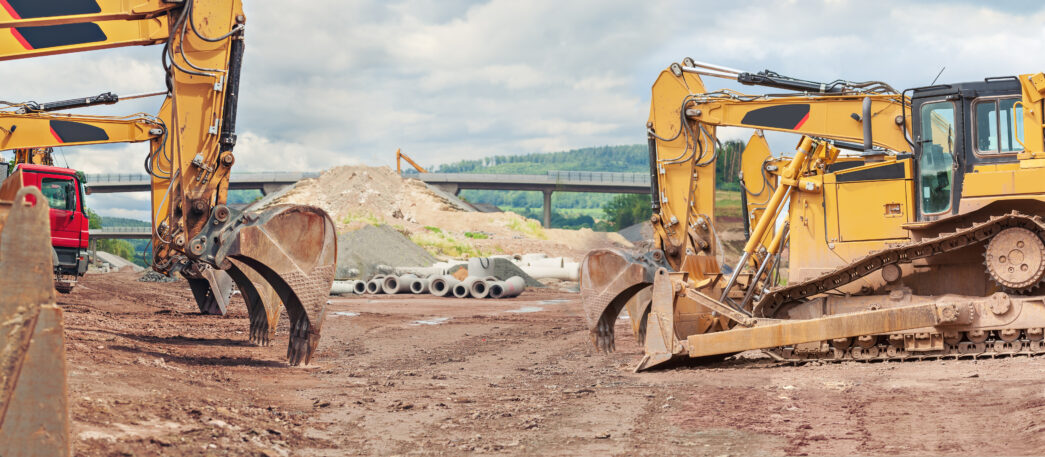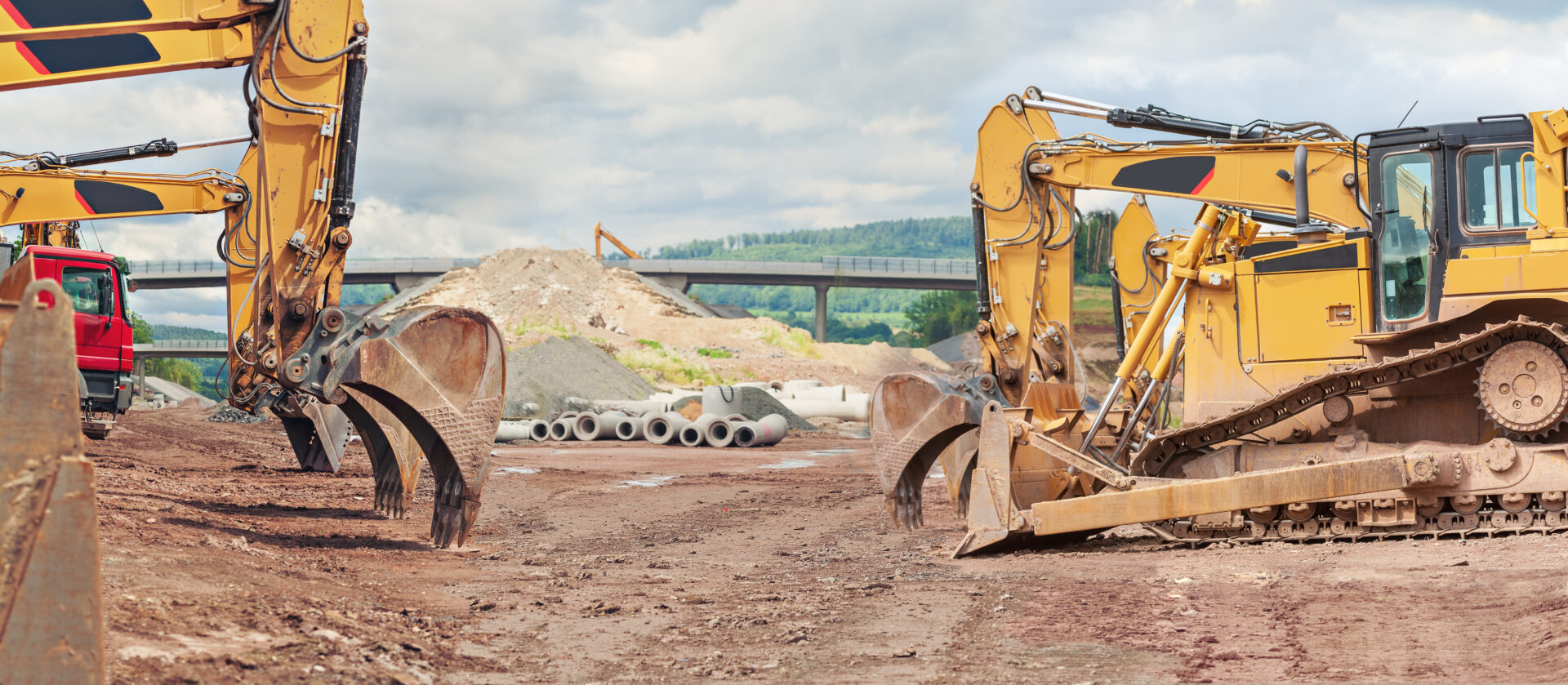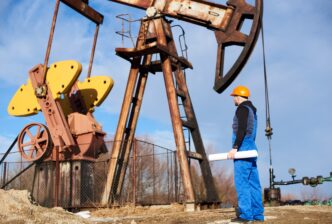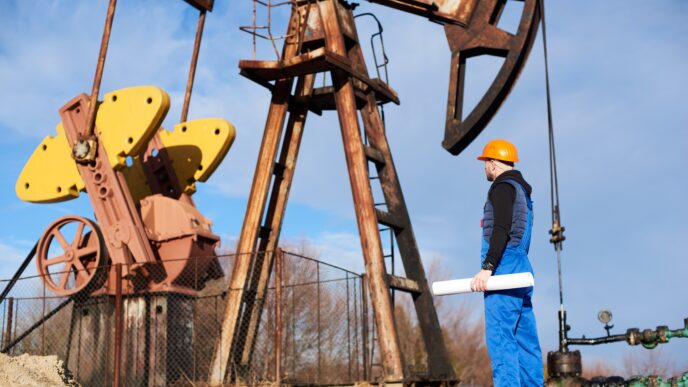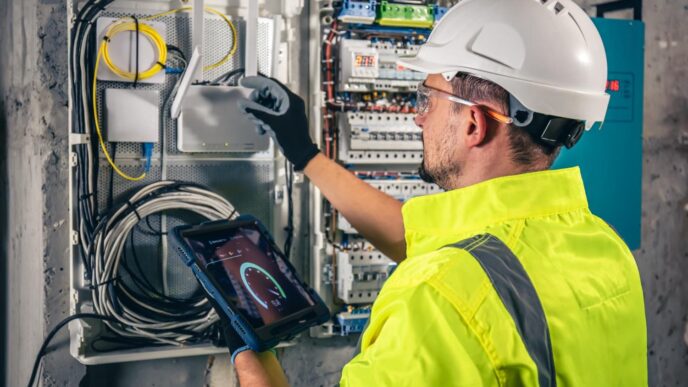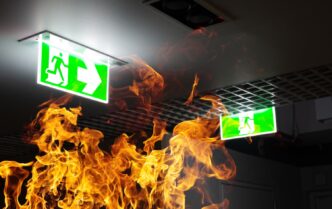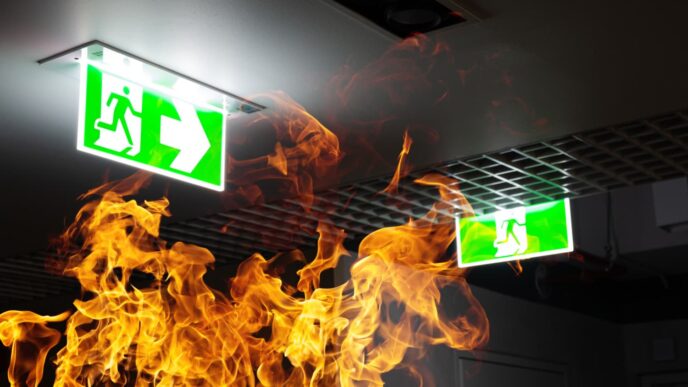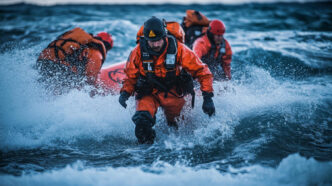Technical Name: NR 12 TRAINING COURSE – MACHINERY AND EQUIPMENT
Reference: 34783
We offer courses and training in technical language: Portuguese, English (Regional), Croatian, Japanese, Spanish, French, Chinese (Regional), German, India (Regional), Arabic, Korean, Russian, among others.
What is the objective of the NR 12 – Machinery Safety Course?
The objective of the NR 12 course is to train professionals to operate, maintain, and inspect machines and equipment safely, in accordance with the legal requirements established by the standard. Therefore, it aims to ensure the physical integrity of the worker and prevent accidents through the understanding of mechanical, electrical, and organizational risks associated with the equipment.
More than a legal requirement, the NR 12 – Machinery Safety Course awakens in the operator a broader awareness of their role. Each machine carries an energy field, and operating it with full attention means acting in harmony with that vibration, making safety a natural extension of presence.
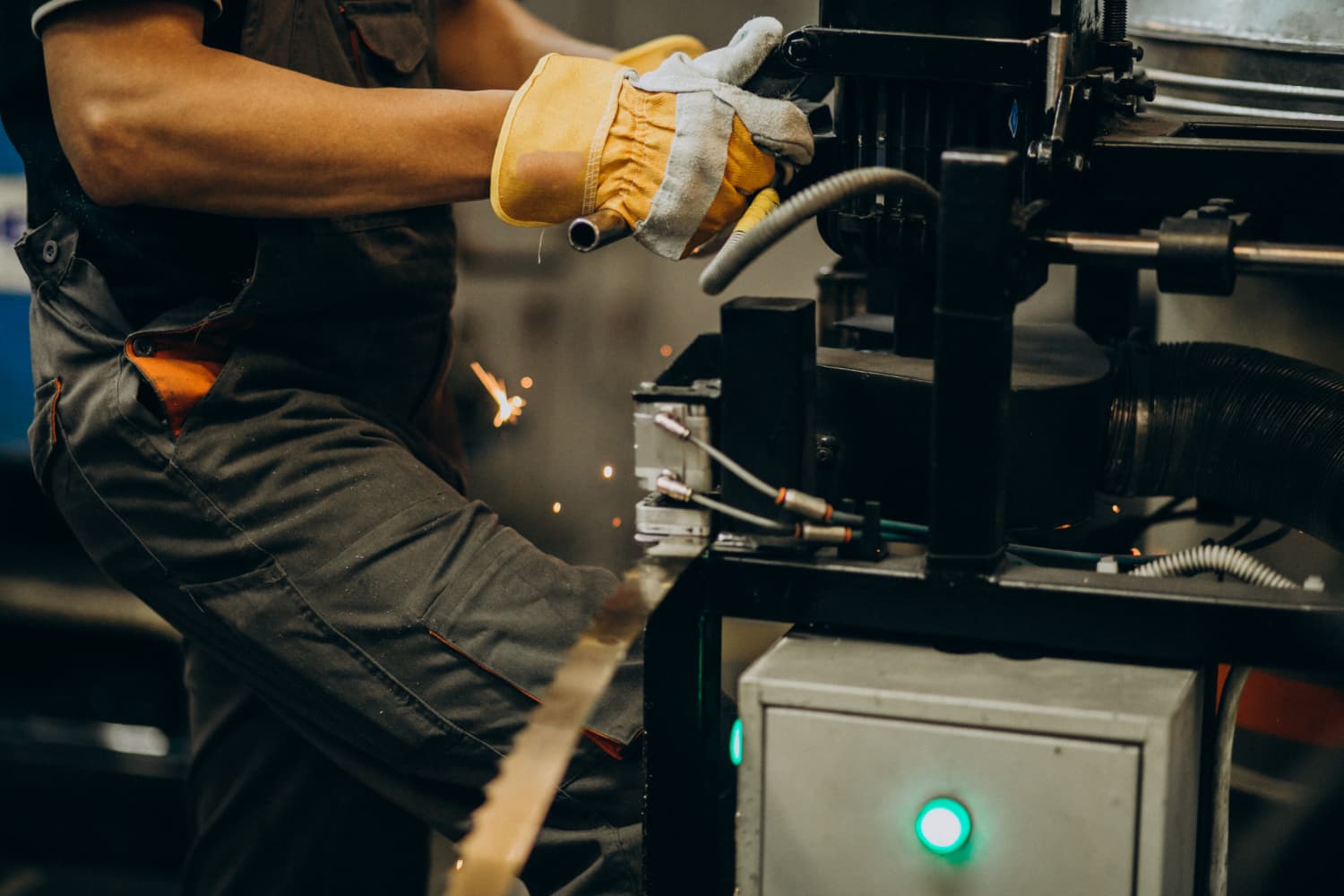
What types of protections are provided for under NR 12?
NR 12 categorizes protections to isolate or prevent access to hazardous parts of machines. The main types include:
| Protection Type | Primary Purpose |
|---|---|
| Fixed Guards | Non-removable barriers that prevent direct contact |
| Movable Guards | Can be opened/moved, require interlocking devices |
| Safety Devices | Sensors, light curtains, emergency stop buttons |
| Complementary Protections | Audible/visual alarms, signs, enclosures |
How should periodic inspections of machine safety protections be carried out?
Inspections must be systematically scheduled, conducted by a qualified professional, and formally documented. The process must verify:
Physical integrity of guards;
Proper functioning of sensors and interlocks;
Correct mounting, no gaps or damage;
Signs of tampering or bypass attempts.
Inspection records should be kept in spreadsheets or management software, with supporting reports and photos. When done with full awareness, inspection becomes more than a routine—it becomes an act of energetic and collective protection.
What are the most common risks associated with the lack of mechanical protection in industrial equipment?
The absence of proper mechanical guarding increases the following risks:
Crushing: Between moving and fixed parts (NR 12.4.1);
Amputation: At shear or cutting points (NR 12.4.6);
Entanglement: By exposed belts, pulleys, chains, or shafts;
Flying particles: In cutting or machining processes without enclosure;
Accidental contact: With heated surfaces or energized components.
These risks are mitigated through physical barriers, enclosures, emergency stop systems, and ongoing operator training. Ignoring such measures is equivalent to allowing chance to govern safety.

Does NR 12 allow the use of old machines that do not meet current safety requirements?
According to NR 12 (item 12.1.4), all machines and equipment in operation must comply with the standard, regardless of their manufacturing date. Older machines must therefore be retrofitted or upgraded with safety devices, based on risk assessments.
Furthermore, employers must ensure that operators are trained to identify residual risks (item 12.15). Noncompliance can be classified as a serious and imminent risk, subject to immediate shutdown by labor inspectors.
What are the main penalties for companies that do not comply with NR 12?
Noncompliance with NR 12 exposes companies to administrative, civil, labor, and even criminal consequences:
| Penalty | Legal Basis | Direct Impact |
|---|---|---|
| Administrative Fines | NR 28 – Annex II | Immediate financial loss |
| Embargo / Interdiction | NR 3 | Operational shutdown |
| Labor lawsuits | CLT + case law | Compensation, pensions, reinstatement |
| INSS Regressive Lawsuits | Law 8.213/91, art. 120 | Reimbursement of social security expenses |
| Reputational and certification losses | Market, ISO standards | Loss of contracts and credibility |
What are the key elements to ensure safety devices are not only installed but properly aligned with their intended function?
To ensure the effectiveness of safety devices, the following five pillars must be met:
Design Based on Risk Assessment (ISO 12100, ISO TR 14121-2):
Identification of mechanical, electrical, thermal, ergonomic hazards;
Risk classification and determination of required Performance Level (PLr).
Installation with Functional Validation (Commissioning):
Inspection prior to operation;
Fail-safe and redundancy testing.
Performance Level (PL) according to ISO 13849-1:
PLr calculated based on exposure frequency, possibility of avoidance, and potential harm;
System implementation from category 2 to 4 depending on criticality.
Preventive Maintenance and Testing:
Scheduled intervals;
Documented evidence;
Technical manager designated with ART (Technical Responsibility Annotation).
Training and Operational Awareness:
Operators must understand the purpose of the protection, how to act in failures, and how to report deviations.
A protection device only fulfills its function when the operator is present, focused, and oriented toward prevention.

Why is the NR 12 – Machinery Safety Course mandatory in industrial environments?
The obligation is defined in item 12.15.1 of NR 12, which states that workers authorized to operate, maintain, inspect, or intervene in machines must receive specific training compatible with their duties. This includes:
Safety principles;
Types of risks;
Protection systems;
Emergency and lockout/tagout procedures (LOTO)
Safe operation under normal and abnormal conditions.
NR 1 (General Provisions) also reinforces that training is a prerequisite for authorizing work involving occupational risk.
Do you still believe that operating a machine without specific training does not pose serious risks to physical integrity?
That belief directly contradicts statistical data and legal precedents. Over 70% of industrial amputations occur with untrained workers or those unaware of safe operational procedures.
Brazilian labor courts recognize that failure to train constitutes employer negligence, worsening indemnification penalties. Even when the worker acknowledges misconduct, the company remains liable for culpa in vigilando (failure to supervise) and culpa in eligendo (failure to select properly).
See Also:
Laudo de Esmerilhadeira NR 12
Curso Operação Sala de Máquinas
Laudo Máquinas de Moldagem por Sopro
Certificado de conclusão
NR-12 Machines Course in English
NR 12 TRAINING COURSE – MACHINERY AND EQUIPMENT
Total Duration: 16 Hours
Module 1 – (2 hours):
Description and identification of the risks associated with each machine and equipment, and the specific protections against each of them.
Module 2 – (2 hours):
Operation of safety devices; how and why they should be used.
Module 3 – (2 hours):
How and under what circumstances a safety device can be removed, and by whom—typically only by inspection or maintenance personnel.
Module 4 – (2 hours):
What actions to take—for example, contacting the supervisor—if a safety device is damaged or has lost its function, no longer ensuring proper safety.
Module 5 – (2 hours):
Safety principles in the use of machinery or equipment.
Module 6 – (2 hours):
Safety measures for mechanical, electrical, and other relevant hazards.
Module 7 – (2 hours):
Safe working method.
Module 8 – (2 hours):
Work permits and lockout/tagout system during inspection, cleaning, lubrication, and maintenance operations.
Course Completion and Certification:
Practical Exercises
Evidence Records
Theoretical Assessment
Practical Assessment (When contracted)
Certificate of Participation
Observation:
The program content presented follows the guidelines established by Regulatory Standard NR 12, which addresses occupational safety when working with machinery and equipment. All instructions covered are in compliance with legal requirements, ensuring worker protection and equipment integrity, with the goal of preventing accidents and promoting a safe and healthy work environment.
Note:
We emphasize that the General Normative Training Syllabus may be modified, updated, or have items added or removed as deemed necessary by our Multidisciplinary Team.
Our Multidisciplinary Team is authorized to update, adapt, modify, and/or exclude content, including the inclusion or exclusion of Standards, Laws, Decrees, or technical parameters they deem applicable—whether directly related or not. The contracting party is responsible for ensuring compliance with applicable legislation.
NR-12 Machines Course in English
NR-12 Machines Course in English
Participants without experience:
Minimum Workload = 32 hours/class
Participants with experience:
Minimum Workload = 16 hours/class
Actualization (Recycling)
Minimum Workload = 08 hours/class
Actualization (Recycling): The employer must realize the periodic training Yearly and always occurs in any of the following situations:
a) change of procedures, conditions or work operations:
b) events that indicates the necessity of a new training;
c) backing off return to work for a superior period of ninety days;
d) change of company;
e) change of machine or equipment;
NR 18.14.2.1 Operators must have completed elementary education and must receive specific qualification and training on the equipment, with a minimum duration of sixteen hours, and annual refresher training with a minimum duration of four hours.
NR-12 Machines Course in English
NR-12 Machines Course in English
Our pedagogical project follows the guidelines imposed by Regulatory Standard #1.
After effective payment, Purchase Order, Contract signed between the parties, or other form of closing confirmation, the didactic material will be released within 72 working hours (up to 9 days), due to the adaptation of the programmatic content and adaptation to the Technical Standards applicable to the scenario expressed by the Contractor; as well as other adaptations to the didactic material, carried out by our Multidisciplinary Team for technical language according to the student’s nationality and Technical Operational and Maintenance Instruction Manuals specific to the activities that will be performed.
Attention: The course teaches how to apply the normative concepts of the standard, which enables one to sign Projects, Reports, Expert Reports, etc. are the attributions that the Legally Qualified Professional has with his Class Council, for example CREA.
This course aims to study situations where it will be necessary to apply: Concepts and Calculations according to pertinent Standards and does not replace the analysis and responsibility on the part of each professional accredited with CREA or other Class Councils in the most varied situations, where it becomes absolutely necessary to respect the conditions of conservation of the equipment, periodic gauging of the instruments, such as the respect of primary capacity pre-determined by the manufacturers of PPE’s, among others based on the corresponding Standards.
OTHER ELEMENTS WHEN APPLICABLE AND CONTRACTED:
General Principles;
Instalation and Eletronic Devices;
Security Sistems;
Starting, activation and stop devices;
Security Systems;
Devices of Emergency Stop;
Permanent means of access;
Pressurized Components;
Convenyors;
Sinalization;
Conscientization about the Instruction Manual Importance;
Work and Security Procedures;
Documentation;
Security’s behavior impact and factors;
Job Analysis;
Complement:
Accident prevention;
Prevention of accidents;
Procedure and notions of first aid;
Practical exercises;
Perception of risks and factors whose affects people perceptions;
Fear Factor;
Consequences of risk habituation;
The importance of knowing the task;
Understanding a of ergonomic;
Job Analysis;
Theorical and Practical Assistance;
Certificate of participation.
Inspection and Maintenance Plan for the Machine or Equipment according to NR 12;
Technical Report with ART of the Machine or Equipment according to NR 12;
Load Test (with ART) according to NR 12;
END (Non-Destructive Testing) according to NR 12;
Electrical Tests NR 10;
Tagging of Machines and Equipment;
RETROFIT – Modernization Process;
Daily Checklist;
One-off or cyclical maintenance.
Activity Complements:
Awareness of Importance:
APR (Preliminary Risk Analysis);
PAE (Emergency Action Plan;
PGR (Risk Management Plan);
Understanding the need for the Rescue Team;
The importance of knowledge of the task;
Prevention of accidents and notions of first aid;
Fire protection;
Perception of risks and factors that affect people’s perceptions;
Impact and behavioral factors on safety;
Fear factor;
How to discover the fastest and easiest way to develop Skills;
How to control the mind while working;
How to manage and manage working time;
Why balance energy during activity in order to obtain productivity;
Consequences of Risk Habituation;
Causes of accidents at work;
Notions about Tree of Causes;
Understanding Fault Tree;
Understandings on Ergonomics;
Workstation Analysis;
Ergonomic Risks;
Hazard Communication Standard (HCS) – OSHA;
Practical Exercises:
Record of Evidence;
Theoretical and Practical Evaluation;
Certificate of participation.
Course Machines NR-12
Learn More: NR-12 Machines Course in English:
12.3 Electrical Installations and Devices
12.3.1 The control and power electrical circuits of machines and equipment must be designed and maintained in such a way as to safely prevent the hazards of electric shock, fire, explosion, and other types of accidents, as provided by official technical standards and, in their absence, applicable international standards.
12.3.2 Enclosures, casings, shielding, or conductive parts of machines and equipment that are not part of the electrical circuits but may become energized must be grounded in accordance with current official technical standards.
12.3.3 The control and power electrical circuits of machines and equipment that are or may be in direct or indirect contact with water or corrosive agents must be designed with components and devices that ensure shielding, sealing, insulation, and grounding to prevent accidents.
12.3.4 The power supply conductors of machines and equipment must meet the following minimum safety requirements:
a) provide mechanical strength compatible with their use;
b) be protected against mechanical breakage, abrasive contact, and exposure to lubricants, fuels, and heat;
c) be positioned so that no segment comes into contact with moving parts or sharp edges;
d) not obstruct the movement of people and materials or the operation of the machines;
e) not pose any other risk due to their location; and
f) be made of fire-retardant materials.
12.3.5 The control and power panels or switchboards of machines and equipment must meet the following minimum safety requirements:
a) have an access door that remains closed at all times, except during maintenance, troubleshooting, or other interventions, in compliance with the provisions of official technical or applicable international standards;
b) display warning signs about electrical shock hazard and restrict access to unauthorized persons;
c) be kept in good condition, clean, and free from objects or tools;
d) provide protection and identification of circuits; and
e) comply with the appropriate degree of protection for the operating environment.
12.3.6 Connections and splices of electrical conductors in machines and equipment must be made using appropriate devices, as per current official technical standards, ensuring mechanical strength, proper electrical contact, and equivalent characteristics to the original conductors, with adequate protection against hazards.
12.3.7 Electrical installations of machines and equipment powered by an external source must have overcurrent protection devices sized according to the circuit’s power demand.
12.3.7.1 Machines and equipment must have overvoltage protection devices when a voltage increase may pose an accident risk.
12.3.7.2 In machines and equipment where power phase loss or inversion may create hazards, there must be devices to prevent accidents.
12.3.8 The following are prohibited in machines and equipment:
a) use of a main switch as a start and stop device;
b) use of knife switches in electrical circuits; and
c) presence of exposed live parts in circuits powered by electricity.
12.3.9 Batteries must meet the following minimum safety requirements:
a) be located so that maintenance and replacement can be performed easily from the ground or a support platform;
b) be built and secured to prevent accidental displacement; and
c) have the positive terminal protected to prevent accidental contact and short circuits.
12.3.10 Battery services and replacements must be performed in accordance with the operational manual’s instructions.
F: NR 12
01 – URL FOTO: Licensor’s author: EyeEm – Freepik.com
02 – URL FOTO: Licensor’s author: senivpetro – Freepik.com
03 – URL FOTO: Licensor’s author: EyeEm – Freepik.com
04 – URL FOTO: Licensor’s author: Freepik
NR-12 Machines Course in English: Contact Us.

